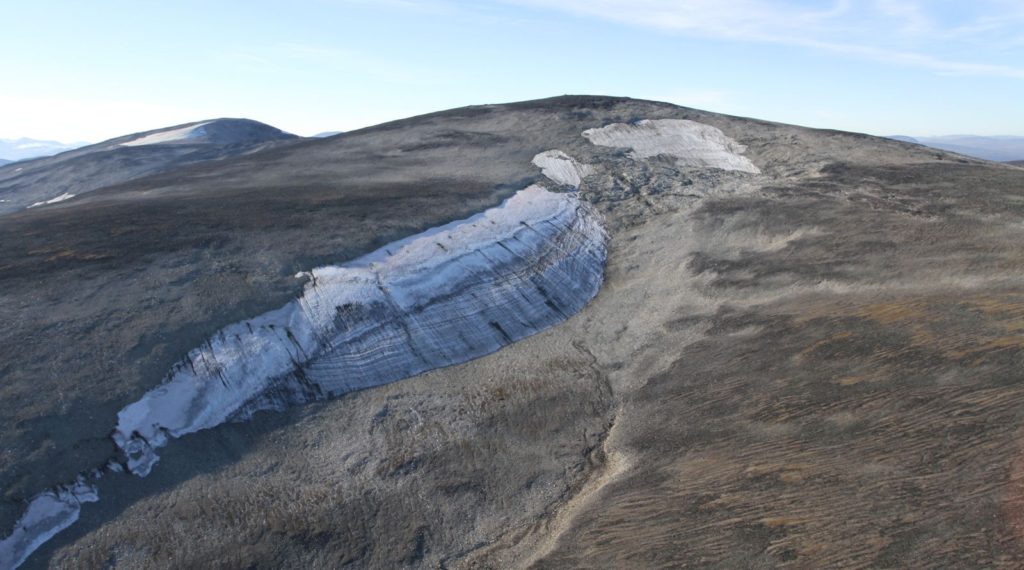The melting of mountain ice in recent years has led to the discovery of artefacts dating back to the Stone Age. The finds appear to be getting older and older as the ice melts back. This begs the question: How old can the artefacts from the ice actually get? Is it possible that future melting could reveal finds dating back to the last Ice Age?
To answer this question we first need to look at the age of the ice. Surprisingly perhaps, and contrary to popular belief, the ice in the high mountains does not date all the way back to the last Ice Age. Most of the mountain ice in the Northern Hemisphere has a maximum age of 7000-9000 years. Why is the ice not older? The answer to that is a warm climatic period called the Holocene Thermal Optimum, which had a maximum warming around 8000 years ago. Studies of mountain glaciers tell us that most of the ice melted completely away during this warm period.
The Holocene Thermal Optimum in the Northern Hemisphere was caused by small and gradual changes in the Earth’s orbit around the sun. When the optimum faded, the ice in the high mountains slowly started coming back. This happened around 7600 years ago in Norway and a little earlier in western North America. A few hundred years after the onset of the new glaciation, some of the ice had become large enough to start moving – the glaciers were back. Since then the ice has expanded and contracted according to climatic conditions. The ice in Norway reached its largest extent during the Little Ice Age (1550-1850), and has melted back since then. The melting of ice in the high mountains of Norway has been especially marked in the first years of the 21st century. We are now back to levels of ice seen 4-6000 years ago.

So, with a maximum age of mountain ice at c. 9000-7000 years before present, we should not expect to finds organic artefacts from the ice older than this? Well, things are not so simple. The vast majority of finds post-date the neo-glaciation (7000 years before present in Europe and 9000 years before present in western North America), but there are a few earlier finds in North America, which are puzzling. The glacial archaeologists in Yukon have radiocarbon-dated most of their recovered artefacts. The oldest, a fragmented dart shaft for an atlatl, is c. 9400 years old (read more here: Hare et al 2012).

There is even a more than 10.000 year old atlatl dart from the Rocky Mountains, which appears to have been lost before the Holocene Thermal Optimum there. This leaves us with the question: how did these very old artefacts survive for so long? Did the ice where they were found survive the Holocene Thermal Optimum? Or can the organic artefacts survive for longer periods outside the ice because of the cold environment at high elevations? The truth is that we do not know for sure. The combination of sustained cold, wind and high altitude does lead to a gradual freeze-drying of artefacts; a kind of natural conservation. This may be what saved the few lucky very old artefacts from the ice.
In conclusion: Even with the exceptional preservation of these early ice artefacts from North America, chances are very small that we will see Ice Age organic artefacts appearing in the next decades as the melting of mountain ice continues, fun as it would have been.
